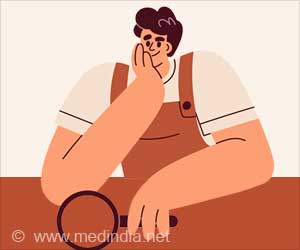Summer means having fun in the sun, beach outings, pool parties and outdoor adventures like hiking, bicycling, camping and skateboarding. Also, during summer vacation, it is essential to prevent injuries and here are few tips to have a fun-filled vacation with your family.
- Using a sunscreen with at least SPF 15, UVA and UVB protection every 30 minutes before going outdoors can protect you from sunburn
- Protect yourself and your family from bites and diseases by using repellent containing DEET or other EPA-approved ingredients
- Have a well-stocked first aid kit that is easily accessible to deal with minor cuts, scrapes and burns
Give kids your undivided attention. Actively supervise children throughout the summer, whether it’s at the playground or in and around water. Small children can drown in as little as one inch of water.
Use the Water Watcher strategy. When there are several adults present and children are swimming, use the Water Watcher card strategy to designate an adult as the Water Watcher for a certain amount of time (such as 15-minute periods) to prevent lapses in supervision and give parents a chance to read, make phone calls or take a bathroom break.
Educated your children about swimming safety. Every child is different, so enroll children in swimming lessons when you feel they are ready. Whether swimming in a backyard pool or in a lake, teach children to swim with an adult. Older, more experienced swimmers should still swim with a partner every time.
Learn CPR. We know you have a million things to do, but learning CPR should be at the top of the list. It will give you tremendous peace of mind – and the more peace of mind you have as a parent, the better.
Wear life jackets. Always have your children wear a life jacket approved by the U.S. Coast Guard while on boats, around open bodies of water or when participating in water sports. Make sure the life jacket fits snugly. Have the child make a “touchdown” signal by raising both arms straight up; if the life jacket hits the child’s chin or ears, it may be too big or the straps may be too loose.
Fireworks are involved in more than 10,000 injuries treated in emergency departments every year, according to the U.S. Consumer Product Safety Commission. Exercise great care when using fireworks, especially when children are around.
Watch out for kids attempting to hold fireworks until just before they explode—this can result in serious hand injuries. Sparklers should only be handled by children over age 6, and only under parental supervision. Younger children can easily burn themselves or someone else. And older kids may take bigger risks, so always make sure an adult is present to supervise.
Alan Nager, MD, MHA, Chief of the Division of Emergency and Transport Medicine at CHLA, recommends going to fireworks shows instead of using them at home (and fireworks are illegal in the City of Los Angeles).
General Summer Health Tips
Drink water during sports. Have your kids bring a water bottle to practice and games and drink plenty of water before, during and after play. This is especially important in summer months to avoid dehydration.
Set up your grill with safety in mind. Use long-handled grilling tools and position your grill well away from siding, deck railings and overhanging branches, while keeping a safe distance from play areas and foot traffic. Periodically remove grease or fat buildup in trays below the grill so it cannot be ignited by heat.
Never leave your child alone in a car, not even for a minute. It can be tempting to leave a child alone in a car while you quickly run into a store, but it can cause serious injury or even death in a matter of minutes. Reduce the number of deaths from heatstroke by remembering to ACT – avoid heatstroke, create reminders, and take action if you see a child left alone.
Wear a helmet for biking and other wheeled sports. We have a simple saying: "Use your head, wear a helmet." It is the single most effective safety device available to reduce head injury and death from bike crashes. Kids should wear a helmet when riding a scooter, skating, skateboarding or biking.
Put on your shoes. Bare feet can leave feet vulnerable to a wide range of injuries. Make sure to wear shoes in public spaces like parks, which may be littered with hidden foreign objects, barbecue coals or other hazards.
Don’t forget your mask. It may be hot, but wearing a mask is an important way to keep yourself and others healthy in the time of COVID-19 or when immune-compromised. Kids under the age of 2 should not wear masks due to risk of suffocation.
Don’t hesitate to go to the Emergency Department if you or your child is injured! Delaying care for a serious injury could have terrible consequences, and treating injuries early offers a better chance at a full recovery. “Fresh injuries like burns, lacerations, internal injuries and illnesses are easier to repair and treat than older injuries and illnesses,” says Dr. Nager. Don’t delay care—your child’s health is essential.
Heat Safety for Your Family
- Infants and children should wear loose, lightweight, light-colored clothing.
- Schedule outdoor activities in the morning and evening hours.
- Never leave infants, children or pets in a parked car, even if the windows are cracked open.
- When it comes to outdoor activities, remember a few serious sunburns can increase your child's risk of skin cancer later in life.
- The sun’s UV rays can damage your skin in as little as 15 minutes.
- The American Academy of Pediatrics and American Association of Dermatology recommends using a sunscreen with at least SPF (sun protection factor) 15 and UVA (ultraviolet A) and UVB (ultraviolet B) protection every time you and your child go outside. For the best protection, apply sunscreen generously 30 minutes before going outdoors and reapply as needed.
- Wear clothing that covers your and your child's skin to help protect against UV rays, especially in places of high sun exposure such as the beach.
- Make sure you, your children and your pets are properly hydrated during the intense summer heat.
- In the U.S., drowning is the leading cause of death in children under age 6. Children need 100 percent supervision when in or around water. That means no distractions like texting, reading a book or just running inside the house to make lunch.
- Practice “touch supervision” (a term used by the American Academy of Pediatrics). This means that at all times, the supervising adult is within an arm’s length of the child being watched, when near or in the water.
- Having your kids take formal swimming lessons is an essential measure to protect them from drowning.
- Remember that even good swimmers can drown in many different water sources including bathtubs, toilets, buckets, baby pools, backyard swimming pools, community pools, streams, creeks, lakes, rivers and oceans.
- Take a cardiopulmonary resuscitation (CPR) certification course. Your CPR skills could save someone’s life.
- For homeowners with a backyard pool, a fence at least five feet tall with an adult safety latch will prevent small children and animals from wandering near the edge of the pool and potentially falling in and drowning.
- Protect yourself and your family by preventing bites and diseases, such as Zika, West Nile virus and Lime disease, which can all be transmitted by insects.
- Use repellent containing DEET or other EPA-approved ingredients. Do not use repellent on babies younger than two months old.
- Make your backyard a tick-safe zone by removing leaf litter, clearing tall grasses and brush around the home and mowing the lawn frequently. Remove old furniture, mattresses or trash from the yard as those are good hiding places for ticks.
- Avoid spending extended periods of time in areas with still water.
- When hiking or camping, cover your skin by wearing long-sleeved shirts, long pants and hats.
- Avoid hiking and outdoor activities at prime mosquito biting times, which are dawn and dusk.
- Bee stings are very common in the summer. Bees are attracted to flowers, so avoid wearing fragrances or floral-patterned clothing. Open containers of food and drink are also attractive to bees.
- Should a bee land on or next to your child, remain calm and gently blow it away.
- It is essential that children wear a helmet anytime they are on wheels, whether that’s a bicycle, scooter, skates, rollerblades, skateboard or hover board. Additional protective gear such as knee pads, elbow pads and wrist guards should also be worn when skateboarding or inline skating.
- The helmet must fit snugly on the child’s head and should not slip or move when the child shakes their head back and forth or from side to side.
- Parents should always lead by example and wear a helmet whenever participating in the above activities.
- Teach your children to recognize these toxic plants and avoid coming into contact with them when playing outdoors.
- It’s the oil from the leaves of these plants that cause the potential allergic reaction. The simple rule to follow is ‘Leaves of three? Let them be.’
- Wearing pants and long sleeve shirts can help decrease the amount of exposed skin.
- Try to stay on cleared pathways and avoid bushy, overgrown areas that may contain these plants.
- Grilling is indeed a wonderful summer pastime, but it does have its dangers. Keep children safe by creating a barbecue-free zone. Draw a border with chalk three feet from the grill on all sides and tell kids they cannot enter that space. Remember, grill temperatures remain hot for a couple of hours after it’s been used.
- According to the National Fire Protection Association, the leading causes of grill fires are a failure to clean, having the grill too close to something that can catch fire and leaving the grill unattended.
- Monitor the internal temperature of foods on the grill, to ensure things have been cooked properly.
- When eating outdoors, remember that food needs to be refrigerated promptly after a meal or they can quickly spoil.
- To deal with minor cuts, scrapes and burns, have a well-stocked first aid kit that is easily accessible in the home, and another kit to keep in the car.
- Be sure to keep a list of emergency numbers in a highly visible location at home. These numbers include the parents’ cell and work, the family doctor, the family dentist, poison control, neighbors and extended family members.
Source-Newswise












